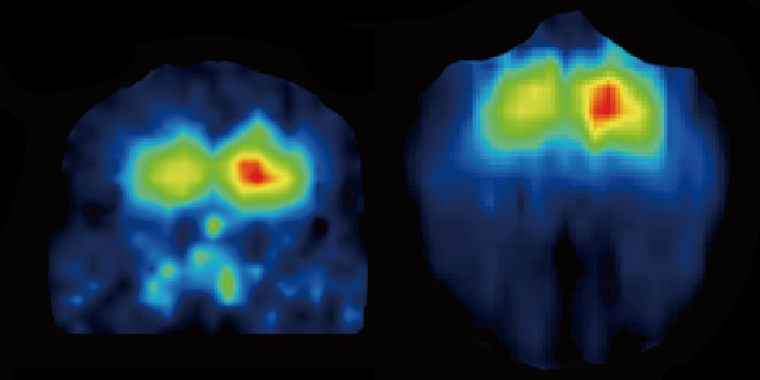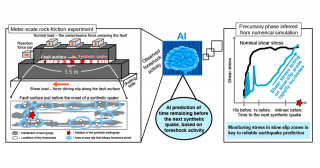Gene therapy expressing calbindin reduces neuron death in monkeys with Parkinson's disease symptoms
More than ten million people worldwide suffer from Parkinson's disease, a number that is only expected to increase as life expectancies rise. The disease begins by killing a specific type of brain cell, known as dopamine neurons -- in a specific part of the brain -- the substantia nigra, leaving patients with a loss of motor skills.
While some drugs exist that slow progression of the disease, there is no cure, and eventually all patients succumb. In a new study in Movement Disorders , researchers from Kyoto University's Primate Research Institute, in collaboration with scientists across Japan, show how gene therapy in monkeys that force dopamine cells to express calbindin could protect the cells from the disease.
Although dopamine neurons are specifically targeted in Parkinson's disease, past research has found that one particular type of dopamine neuron seems inoculated to the disease.
"According to clinical data obtained from postmortem brains of patients, dopamine neurons expressing calbindin are selectively spared from cell death," explains Masahiko Takada who lead the study.
Calbindin refers to a family of calcium-binding proteins that controls the amount of free calcium in a cell. About 20% of all dopamine neurons express calbindin, and it is known that dopamine neurons susceptible to cell death carry an unusually high amount of free calcium.
Takada and his colleagues have been investigating the effects of gene therapy on monkey behavior, including in conditions resembling Parkinson's disease.
"There's a lot of research on gene therapy to treat Parkinson's. That research uses neurotrophic factors, enzymes related to dopamine synthesis, and other key substances. But nobody has looked into gene therapies for calbindin," says the first author Ken-ichi Inoue.
The researchers applied gene therapy for calbindin to one brain hemisphere in nine monkeys to compare the survival rates of dopamine neurons and preference for limbs between the two sides of the body.
Cells in the brain hemisphere that received the gene therapy showed a 50% higher survival rate than the other side, and the monkeys showed a preference for using limbs controlled by the treated hemisphere.
"Neurons positive for proteins that form plaques were more prevalent on the control hemisphere, indicating reduced pathology and reduced Parkinson's symptoms on the treated side of the brain." says Inoue.
Takada concludes that his calbindin findings could benefit future treatment and incorporate with other methods, such as stem cell therapy. "With different treatment methods on the horizon, we'd like to see how different methods can be combined for more effective treatment. We will continue to investigate our data for possible future applications."

MRI images of the coronal and axial planes of the brain. Note the differences in the treated side (right hemisphere) and untreated control side (left hemisphere) (Kyoto University / Takada Lab)
Paper information
【DOI】 https://doi.org/10.1002/mds.107
Ken-ichi Inoue, Shigehiro Miyachi, Katsunori Nishi, Haruo Okado, Yuji Nagai, Takafumi Minamimoto, Atsushi Nambu, Masahiko Takada (2018). Recruitment of calbindin into nigral dopamine neurons protects against MPTP-Induced parkinsonism. Movement Disorders, 34(2), 200-209.





